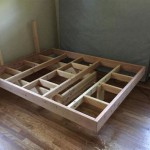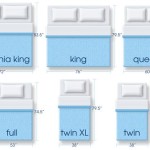How High Off The Ground Is A Standard Bed Frame?
The height of a standard bed frame can vary significantly, influenced by factors such as frame style, mattress thickness, and intended use. Understanding these variations is crucial for selecting the right bed for individual needs and preferences, as bed height impacts accessibility, aesthetics, and under-bed storage potential.
Frame Styles and Their Impact on Height
Different bed frame styles contribute significantly to overall bed height. Platform beds, known for their minimalist design and reliance on a slatted base rather than a box spring, generally sit lower to the ground. Their height typically ranges from 6 to 14 inches, depending on the thickness of the platform itself and the legs or base supports. This lower profile makes them a popular choice for modern aesthetics and individuals who prefer a bed closer to the floor.
Traditional bed frames, designed to accommodate a box spring and mattress, typically sit higher. These frames commonly range from 14 to 18 inches in height, with variations depending on the specific design and leg style. The addition of a box spring, which usually adds 8 to 10 inches, further elevates the sleeping surface. This traditional setup offers a more elevated sleeping position preferred by some individuals.
Other frame styles, such as adjustable beds, can offer a wide range of height adjustments. These frames utilize motorized bases that allow users to customize the head and foot positions, as well as the overall bed height. This flexibility caters to individuals with specific medical needs or those who prefer a customized sleep experience.
Mattress Thickness: A Key Factor in Overall Bed Height
The thickness of the mattress plays a substantial role in determining the final sleeping height. Mattresses range from a slim 6 inches to a plush 18 inches or more. Thicker mattresses naturally elevate the sleeping surface, adding to the overall height of the bed. When considering bed height, it's essential to factor in the mattress thickness alongside the frame height to determine the final height from the floor to the sleeping surface.
The choice of mattress thickness depends on personal preference and comfort needs. Some individuals prefer the supportive feel of a thinner mattress, while others find greater comfort in a thicker, plusher mattress. This preference, combined with the frame height, dictates the overall accessibility and appearance of the bed.
The Importance of Considering Intended Use and User Needs
The ideal bed height varies based on individual needs and the intended use of the bed. For individuals with mobility issues, a lower bed height may be crucial for ease of getting in and out of bed. A lower profile can also be beneficial for children or elderly individuals, reducing the risk of falls. Conversely, taller individuals may find a higher bed more comfortable and easier to access.
Under-bed storage is another factor to consider. A higher bed frame provides more clearance for storage containers and other items under the bed, maximizing space utilization in smaller rooms. However, excessively high beds can make accessing stored items difficult. Finding a balance between storage space and accessibility is key to selecting the appropriate bed height.
Aesthetic preferences also play a role in choosing bed height. Lower beds can create a modern, minimalist feel, while higher beds offer a more traditional and sometimes grander appearance. The bed height can significantly influence the overall aesthetic of the bedroom, complementing the room's design and style.
Measuring for the Right Bed Height
Determining the ideal bed height involves considering the combined height of the frame and mattress. A simple measurement from the floor to the top of the mattress provides the overall sleeping height. To assess accessibility, it's helpful to sit on the edge of the bed and observe how easily feet can be placed flat on the floor. Knees should be at a comfortable 90-degree angle, allowing for easy standing and sitting.
Considering these factors – frame style, mattress thickness, user needs, and aesthetic preferences – will guide individuals towards selecting a bed frame with the appropriate height for optimal comfort, accessibility, and design integration within the bedroom space.
Standard Bed Heights and Common Variations
While the term "standard" bed height can be somewhat misleading given the range of options available, it's helpful to understand some common height ranges. As mentioned earlier, platform beds typically range from 6 to 14 inches, while traditional frames with box springs result in a sleeping surface typically between 22 and 28 inches from the floor. These ranges provide a general guideline, but it's always essential to check the specific measurements of the chosen frame and mattress.
Variations within these ranges occur due to design choices, leg styles, and manufacturer preferences. Some manufacturers offer different leg options for the same frame, allowing for customization of the bed height. It's essential to review product specifications and measurements to ensure the chosen bed aligns with individual needs and preferences.

Standard Bed Height The And Mattress From Floor Queen Size Frame Diy Sizes Measurements

Standard Bed Height The And Mattress From Floor Queen Size Frame Diy Sizes Measurements

Standard Bed Height The And Mattress

Best Bed Height High Vs Low Beds Mattress Clarity

What Is The Average Bed Height And Why It Matters Cort

Best Bed Height High Vs Low Beds Mattress Clarity

What S The Best Bed Height Amerisleep

Best Bed Height High Vs Low Beds Mattress Clarity

What S The Best Bed Height Sleepopolis
Casper Bed Frame Review 2024 Haven And Repose Frames
Related Posts







